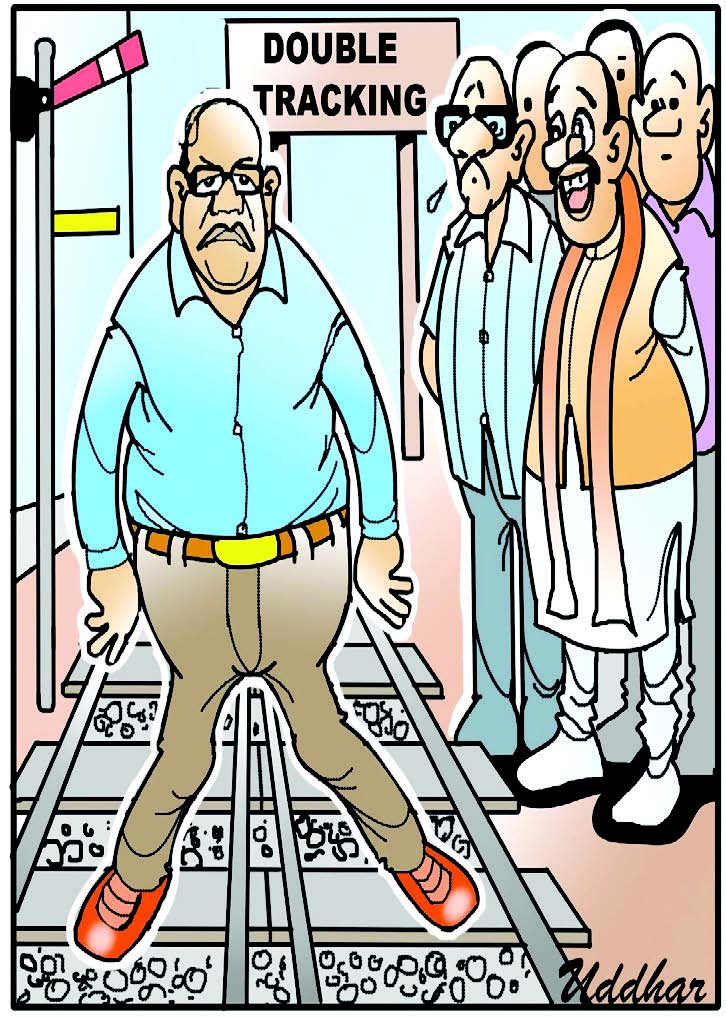Kamlesh Vora
Very often the government’s mega projects, like expressways, bridges, doubling of rail lines of roads, etc, costing hundreds of crores of rupees, which are being executed/implemented are objected by stack holders, public or experts through newspaper and WhatsApp. At times such objections are taken to a higher level, say courts, and subsequently many are suspended or withdrawn. The time and funds spent for the purpose seem to be wasted. However, when analysed in detail, there is nothing basically wrong with them. They were necessary, required, and suggested by experts after long deliberations and perhaps were the need of the hour. The objections raised are due to wrong or no information, sudden implementation without proper advance information and also due to genuine modification requirements in the technical aspect of one or other type. If the projects are executed transparently, such hurdles, besides corruption in execution may be avoided to great extent.
Let’s examine how such projects originate. At times, they fall out of policies of the government - outlined in the budget or proposed by concerned authorities, public or expert committee, on evaluation of existing scenario suggesting ways to mitigate some difficulty, improve convenience or improve safety, etc, by means of such mega projects.
In government parlance generally, the first proposal may be just an outline of the need with some justifications, broad details of what is proposed and anticipated funding sources. The competent authority evaluates such need and approves it. The next stage after approval is the preparation of a detailed document, after appointing the necessary consultants. At this stage, all details are finalised in minute details. The final stage is execution through a contractor.
The biggest lacuna in this process flow is generally lake of public consultation. Not that each and every voter needs to be consulted, not that most of them are even interested, but even a few genuinely interested, knowledgeable people are concerned about the environment, wastage of funds and most importantly corruption in implementation, and they may contribute some important suggestions. Some of them may have alternate suggestions, suggestions for improvement, minor additions, technology improvement, etc. How such concerns may be addressed?
Using the technology is a simple solution. A website where all government departments upload their mega project (above Rs 100 crores?) at every stage where it is possible to upload comments from verified citizens/experts with some time limit. In such a case say, for example, when the proposal for a road doubling from town A to B is mentioned as the next work, there may not be any objections, if that is a critical requirement but when the detailed proposal is uploaded with the alignment shown clearly, objections may be raised early, giving the concerned engineer to resolve the issue, if necessary and design may be improved. Even some experts may suggest improved technology or a finer point. This process does not take out any power of authority but gives him the opportunity to get input from a wide pool.
The transparency brought in by such a process has immense value as chances of corruption will be reduced to a great extent, wasteful expenditure may be curtailed and chances of objections, once the project is in an advanced stage of implementation, are greatly reduced. All that is required is to have a portal for public consultation. For ease of grievance redressal/lodging, a complaint even the use of WhatsApp may be very helpful to citizens. Many states have a WhatsApp number for informing road ditches. In fact, there should be reverse flow too. As many people now pay the bill digitally, their area is known to the authority with their email and phone number.
There is a dire need of integrating various stages of processes in many government departments. Take, for example, if one goes to RTO for renewal of licence, he has to visit five or six tables for various stages, every time standing in a long queue, however, person seating at another end of the table is quite capable of carrying out each stage, and thus completing the job in less than 10 minutes, if the systems are integrated. Similarly, in all departments, be that education, revenue, or sports there are opportunities to simplify the system, making it user-friendly. Hope the use of technology will be increased in governance for the ease of common citizens.
